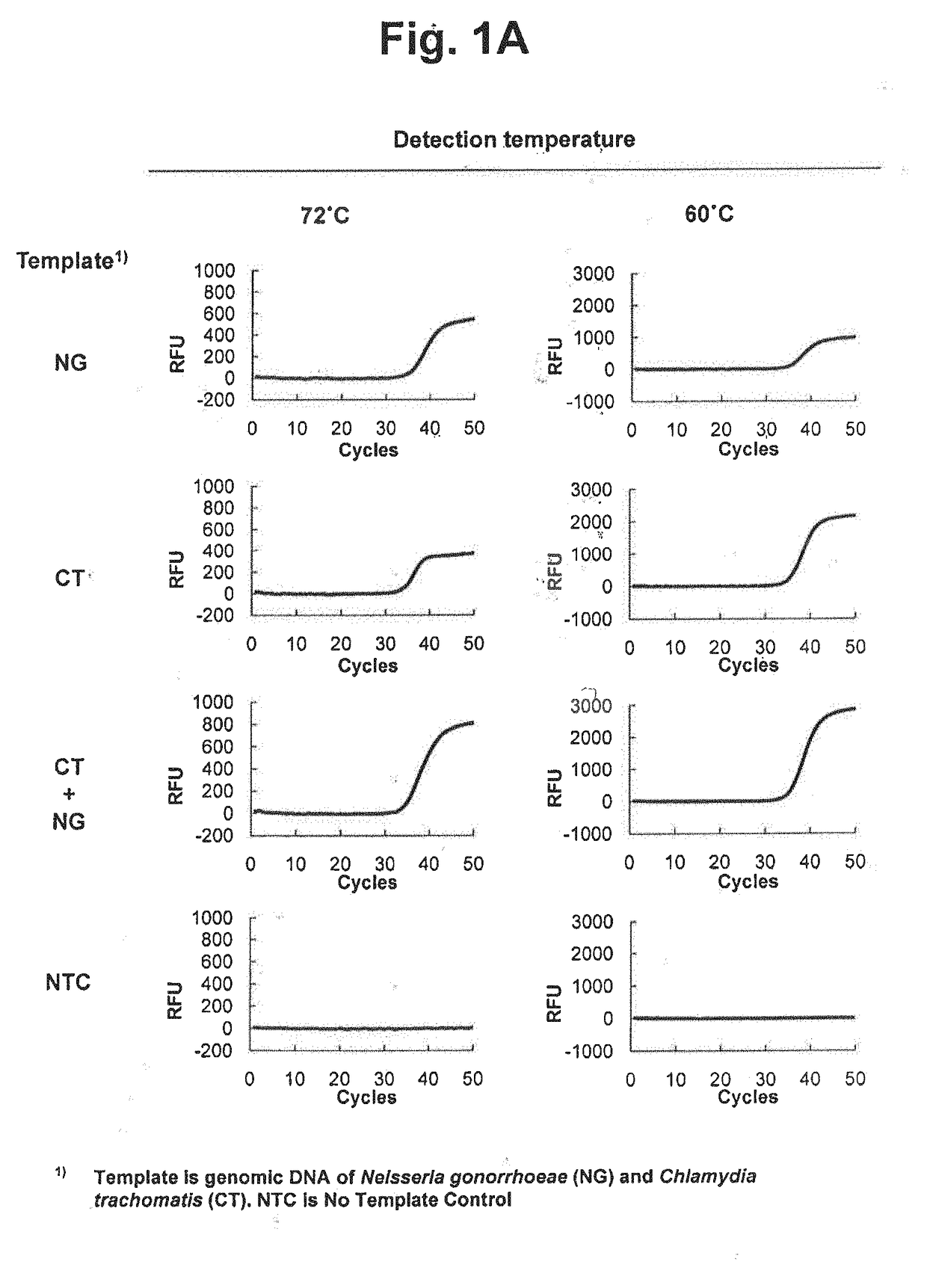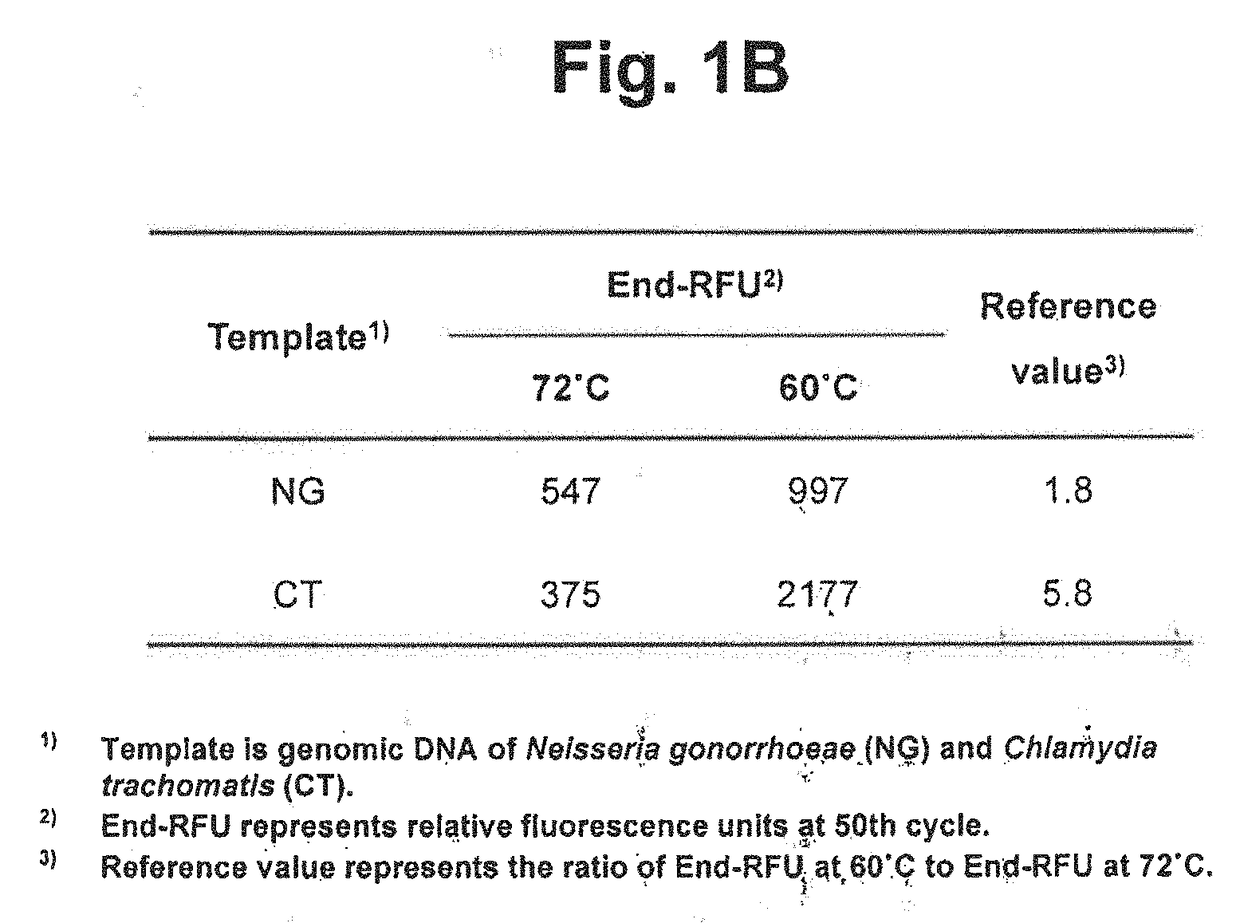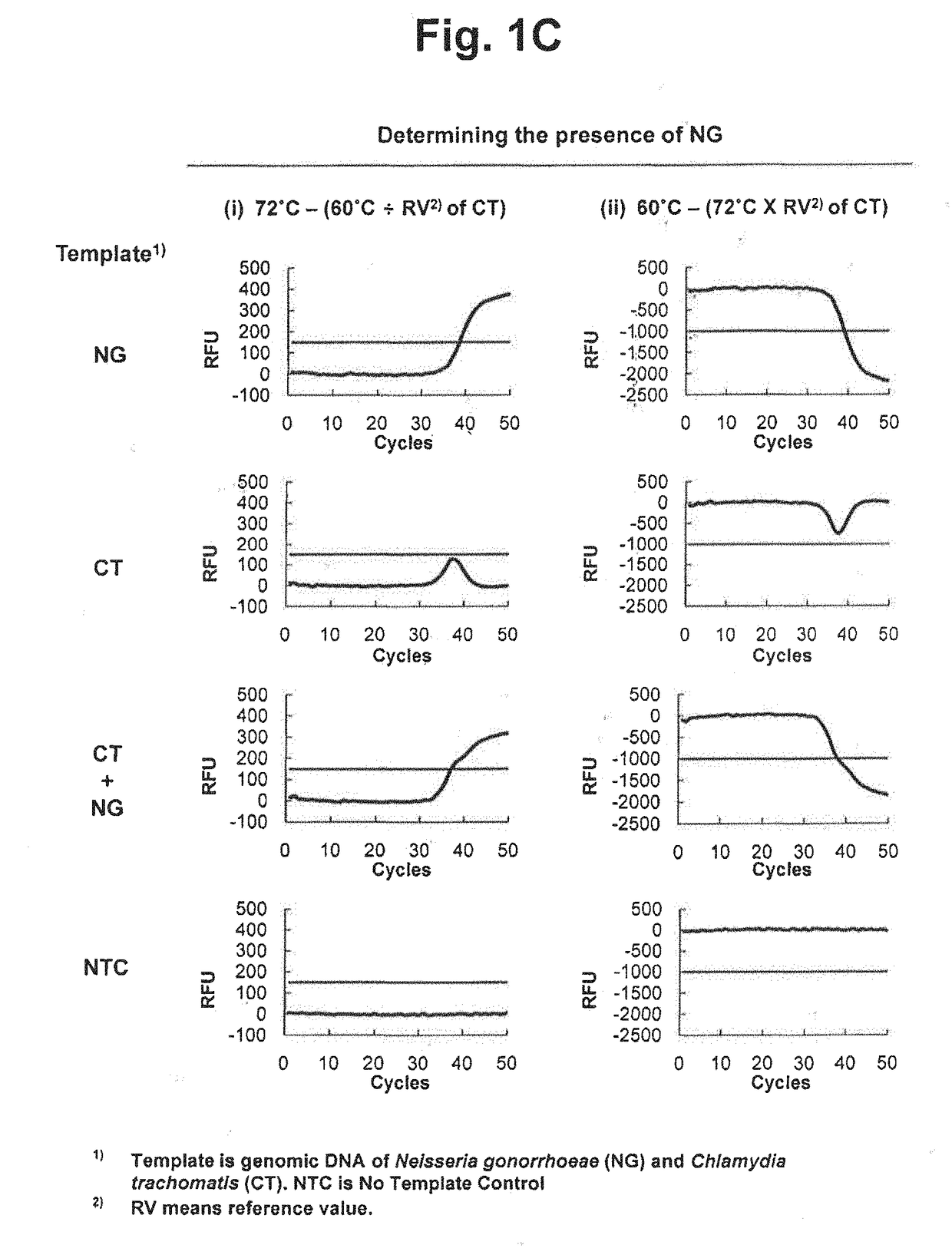Detection of target nucleic acid sequences using different detection temperatures and reference values
- Summary
- Abstract
- Description
- Claims
- Application Information
AI Technical Summary
Benefits of technology
Problems solved by technology
Method used
Image
Examples
example 1
Target Detection by Taqman Real-Time PCR Using Different Detection Temperatures and Reference Values
[0334]We examined whether two target nucleic acids in samples can be detected in a single reaction vessel by using a single detection channel. The following detection processes were performed using different detection temperatures and reference values and TaqMan real-time PCR was applied as signal generating means.
[0335]Taq DNA polymerase having a 5′ nuclease activity was used for the extension of upstream primers and downstream primers and the cleavage of TaqMan probes. The genomic DNA of Neisseria gonorrhoeae (NG) and genomic DNA of Chlamydia trachomatis (CT) were used as target nucleic acid sequences. Four types of samples (NG, CT, NG+CT and no target control) were prepared and analyzed.
[0336]TaqMan real-time PCR was employed to detect NG and CT. Where a target nucleic acid is present, a TaqMan probe is cleaved and a labeled fragment is released. An amplification curve can be obtai...
example 2
Target Detection by PTOCE Real-Time PCR Comprising Using Different Detection Temperatures and Reference Values
[0350]We examined whether two target nucleic acids in samples can be detected in a single reaction vessel by using a single detection channel. The following detection processes were performed using different detection temperatures and reference to values and PTOCE real-time PCR was applied as signal generating means.
[0351]Taq DNA polymerase having a 5′ nuclease activity was used for the extension of upstream primers and downstream primers, the cleavage of PTO, and the extension of PTO fragment. Genomic DNA of Neisseria gonorrhoeae (NG) and genomic DNA of Chlamydia trachomatis (CT) were used as target nucleic acid sequences. Four types of samples (NG, CT, NG+CT and no template control) were prepared and analyzed.
[0352]PTOCE real-time PCR was used to detect CT and NG. If a target is present, a PTO is cleaved and a PTO fragment is produced. The PTO fragment is annealed to the c...
example 3
yping Using Different Detection Temperatures and Reference Values
[0367]We examined whether the present method can be applied to SNP genotyping in a single reaction vessel using a single detection channel. PTOCE real-time PCR was applied as signal generating means.
[0368]Taq DNA polymerase having a 5′ nuclease activity was used for the extension of upstream primer and downstream primer, the cleavage of PTO, and the extension of PTO fragment. Wild (C) homozygote, mutant type (T) homozygote, and heterozygote of MTHFR (C677T) human genomic DNA were used as target nucleic acid sequences.
[0369]PTOCE real-time PCR was used to detect the wild (C) allele and mutant type (T) allele of the MTHFR (C677T) human genomic DNA. If a target allele is present, a PTO is cleaved and a PTO fragment is produced. The PTO fragment is annealed to the capturing portion of the CTO, extended on the templating portion of the CTO and forms an extended duplex with CTO (Duplexed CTO). The formation of the extended d...
PUM
| Property | Measurement | Unit |
|---|---|---|
| Temperature | aaaaa | aaaaa |
Abstract
Description
Claims
Application Information
 Login to View More
Login to View More - R&D
- Intellectual Property
- Life Sciences
- Materials
- Tech Scout
- Unparalleled Data Quality
- Higher Quality Content
- 60% Fewer Hallucinations
Browse by: Latest US Patents, China's latest patents, Technical Efficacy Thesaurus, Application Domain, Technology Topic, Popular Technical Reports.
© 2025 PatSnap. All rights reserved.Legal|Privacy policy|Modern Slavery Act Transparency Statement|Sitemap|About US| Contact US: help@patsnap.com



